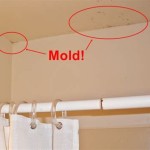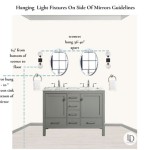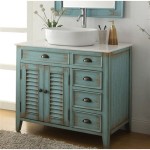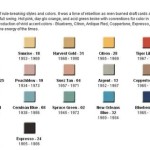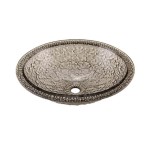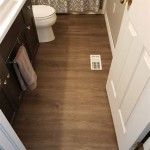Rustic Sink Bathroom Vanities: A Timeless Blend of Nature and Function
Rustic sink bathroom vanities represent a design aesthetic that seeks to bring the warmth and character of the outdoors into the often sterile environment of the bathroom. These vanities are more than just functional fixtures; they are statement pieces that evoke a sense of history, nature, and handcrafted quality. The appeal of rustic vanities lies in their ability to blend seamlessly with a variety of bathroom styles, from traditional farmhouse to modern industrial, offering a touch of organic elegance and visual interest.
The term "rustic" encompasses a broad range of design elements, materials, and finishes, resulting in a diverse selection of rustic sink bathroom vanities. This diversity allows homeowners to find a piece that perfectly complements their existing décor and personal style. Common characteristics include the use of natural materials, distressed finishes, and design features that highlight the inherent beauty of the wood or other primary material.
The resurgence of rustic design in recent years reflects a desire for authenticity and a connection to nature. In a world increasingly dominated by mass-produced items, rustic vanities offer a tangible link to the past, celebrating craftsmanship and the unique imperfections that make each piece one-of-a-kind. Choosing a rustic vanity is a way to incorporate a sense of warmth and personality into the bathroom, transforming it from a purely functional space into a welcoming and inviting retreat.
The purpose of this article is to explore the key elements of rustic sink bathroom vanities, providing information on materials, design considerations, styling options, and maintenance, to help homeowners make informed decisions when selecting the perfect rustic vanity for their bathroom.
Key Material Choices and Their Characteristics
The foundation of any rustic sink bathroom vanity lies in the materials used in its construction. The choice of material significantly impacts the overall aesthetic, durability, and maintenance requirements of the vanity. Understanding the characteristics of different materials is crucial for selecting a vanity that meets both aesthetic preferences and practical needs.
Wood: Wood is undoubtedly the most common and iconic material used in rustic vanities. Various types of wood, each with its unique grain patterns, color variations, and textures, contribute to the diverse range of rustic styles. Reclaimed wood, in particular, is highly sought after for its inherent character and sustainable appeal. Reclaimed wood often displays signs of previous use, such as nail holes, knots, and weathered surfaces, which add to its rustic charm. Solid wood, such as oak, pine, maple, and walnut, are also popular choices, offering strength, durability, and a natural warmth.
Metal: Metal accents are frequently incorporated into rustic vanity designs, providing a contrasting element to the natural warmth of wood. Wrought iron, steel, and copper are commonly used for hardware, legs, and decorative details. Metal can be finished in a variety of ways, from matte black to brushed nickel, to complement the overall rustic aesthetic. The use of metal can lend an industrial or modern edge to the rustic design, creating a balanced and visually appealing contrast.
Stone: Stone countertops are another common feature of rustic vanities, providing a durable and elegant surface for the sink. Granite, marble, and slate are popular choices, each offering a unique aesthetic and varying levels of maintenance. Granite is highly durable and resistant to scratches and stains, making it a practical choice for a bathroom vanity. Marble offers a more luxurious look, but requires more careful maintenance to prevent staining. Slate provides a more rugged and natural look, often with textured surfaces that enhance the rustic aesthetic.
Other Materials: While wood, metal, and stone are the most prevalent materials, other elements are sometimes incorporated into rustic vanity designs. These may include concrete, which offers a contemporary industrial feel, or even natural elements such as river rock or petrified wood, used as decorative accents.
The selection of materials should be carefully considered, taking into account the desired aesthetic, durability requirements, and maintenance preferences. A well-chosen material palette will contribute significantly to the overall success of the rustic bathroom vanity design.
Design Elements and Styling Considerations
Beyond the choice of materials, the design elements and styling considerations play a crucial role in defining the character and appeal of a rustic sink bathroom vanity. These elements encompass the overall shape, size, storage options, and decorative details that contribute to the vanity's visual impact and functionality.
Cabinet Style: The cabinet style of a rustic vanity can range from simple and minimalist to ornate and elaborate. Shaker-style cabinets, with their clean lines and recessed panels, are a popular choice for a more understated rustic look. Raised-panel cabinets, with their intricate moldings and decorative details, can create a more traditional and formal rustic aesthetic. Open shelving is another common feature of rustic vanities, allowing for the display of towels, toiletries, and decorative items. The choice of cabinet style should complement the overall style of the bathroom and reflect the homeowner's personal preferences.
Hardware: Hardware, such as knobs, pulls, and hinges, are essential details that can significantly impact the overall look and feel of a rustic vanity. Antique brass, wrought iron, and oil-rubbed bronze are popular finishes for rustic hardware, contributing to the aged and weathered aesthetic. The style of the hardware should be consistent with the overall design of the vanity, whether it's a simple and understated pull or an elaborately detailed knob.
Sink Placement: Sink placement is another important design consideration. Undermount sinks, which are installed beneath the countertop, offer a clean and seamless look that is easy to clean. Vessel sinks, which sit on top of the countertop, can create a more dramatic and eye-catching focal point. Farmhouse sinks, with their exposed front apron, are a classic choice for rustic vanities, adding a touch of traditional charm. The choice of sink placement should be carefully considered, taking into account the overall design of the vanity and the homeowner's personal preferences.
Storage Solutions: While aesthetics are important, functionality is equally crucial. Rustic vanities should provide ample storage space for toiletries, towels, and other bathroom essentials. Drawers, cabinets, and open shelving can be combined to create a customized storage solution that meets the homeowner's specific needs. Baskets and bins can be used to organize items on open shelves, adding to the rustic aesthetic while keeping things tidy and accessible.
Finishes and Distressing: The finish of a rustic vanity is a key element that contributes to its overall character. Distressed finishes, which mimic the look of aged and weathered wood, are a popular choice for rustic vanities. These finishes often involve techniques such as sanding, staining, and antiquing to create a unique and textured surface. Other popular finishes include natural oil finishes, which enhance the natural beauty of the wood, and painted finishes, which can add a pop of color to the bathroom.
Careful consideration of these design elements and styling choices will result in a rustic sink bathroom vanity that is both visually appealing and highly functional, enhancing the overall aesthetic of the bathroom.
Maintenance and Care for Longevity
Rustic sink bathroom vanities, like all bathroom fixtures, require regular maintenance and care to ensure their longevity and preserve their beauty. The specific maintenance requirements will vary depending on the materials used in the vanity's construction and the finishes applied. However, some general guidelines apply to all rustic vanities.
Regular Cleaning: Regular cleaning is essential to prevent the buildup of dirt, grime, and water stains. The frequency of cleaning will depend on the amount of use the vanity receives, but a weekly cleaning is generally recommended. Use a mild soap and water solution to clean the vanity's surfaces, avoiding harsh chemicals or abrasive cleaners that can damage the finish. Always dry the surfaces thoroughly after cleaning to prevent water spots and mildew growth.
Protecting Wood Surfaces: Wood surfaces, in particular, require special attention to prevent water damage and staining. Use coasters under cups and glasses to protect the countertop from water rings. Wipe up spills immediately to prevent staining. Consider applying a protective sealant or wax to the wood surfaces to provide an extra layer of protection against moisture and stains. Be sure to follow the manufacturer's instructions for applying the sealant or wax.
Maintaining Metal Hardware: Metal hardware can also be affected by moisture and humidity. Regularly wipe down metal hardware with a damp cloth to remove water spots and fingerprints. Apply a metal polish to maintain the shine and prevent corrosion. For hardware with a distressed finish, avoid using harsh polishes that can remove the patina. Instead, use a soft cloth to gently clean the hardware.
Addressing Minor Damage: Minor scratches and dents can occur over time, especially on vanities with distressed finishes. These imperfections can often be touched up with a matching stain or paint. Consult with a professional for more significant damage or repairs. It is important to address minor damage promptly to prevent it from worsening.
Preventing Mold and Mildew: Bathrooms are inherently humid environments, which can promote the growth of mold and mildew. Ensure proper ventilation in the bathroom to reduce humidity levels. Regularly inspect the vanity for signs of mold or mildew, particularly in areas prone to moisture, such as around the sink and faucet. Use a mold and mildew cleaner to remove any growth and prevent its recurrence.
By following these maintenance and care guidelines, homeowners can ensure that their rustic sink bathroom vanity remains a beautiful and functional centerpiece of their bathroom for years to come. Regular care and attention will not only prolong the life of the vanity but also help to preserve its unique character and rustic charm.

25 Rustic Bathroom Vanities To Consider

Rustic Bathroom Vanity Kreg Tool

Rustic Log Bathroom Vanity Ms1373 25 Pump Faucet

25 Rustic Bathroom Vanities To Consider

26 Impressive Ideas Of Rustic Bathroom Vanity Home Design Lover Remodel Lighting Bathrooms

Accos 60 Inch Rustic Double Sink Bathroom Vanity Marble Top

Rustic Bathroom Vanities Ana White

Water Creation Paisley 72 In W X 22 D Vanity Rustic Sienna With Marble Top White Basin Py72cw03rs 000000000 The Home Depot

12 Amazing Rustic Vanities To Upgrade Your Bathroom Matchness Com Western Decor Sink

Diy Rustic Bathroom Vanity Sammy On State
Related Posts
